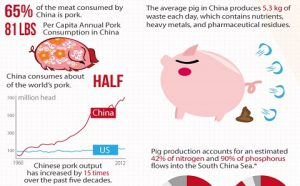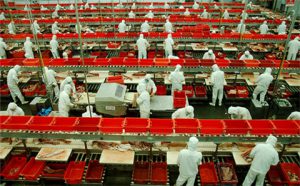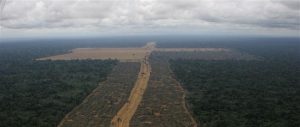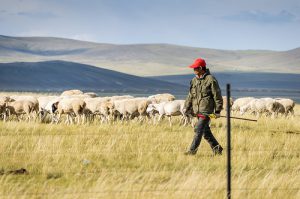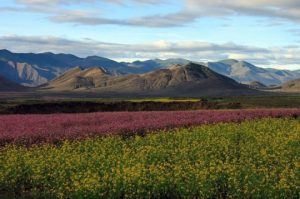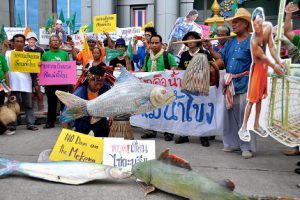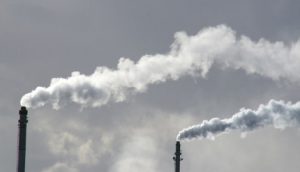Tom Levitt (TL): How has the footprint of meat managed to remain hidden in public debate?
Tony Weis (TW): The basic inefficiencies of cycling huge volumes of grains and oilseeds through livestock have been known for decades, as much of the useable nutrition is burned in the metabolic processes of animals. Frances Moore Lappé drew attention to this in her classic book Diet for a Small Planet, which is now more than 40 years-old. Yet the problem has largely remained hidden from much public discussion and debate, certainly in relation to its growing scale and significance. Part of the reason for that is the complexity of our modern world. It is hard for us to unpack the nature of most of the commodities we encounter every day, including the resource budget and pollution load associated with their production. This is very true of food; most people have very little sense of all that is embedded in what they eat. The one environmental impact of rising meat consumption that is starting to gain more attention is the major contribution it makes to climate change.
TW:
I think rising meat consumption is an underappreciated aspect of how modernity is understood, as an aspiration and implicit marker of development. Some of this is rooted in the myth that animal flesh is a superior source of protein, and there are other older cultural dimensions to this, such as the image of the British beefeater as a foundation of imperial strength. Today, on a world scale, levels of meat consumption clearly reflect global inequalities. One powerful indication of this is how China is racing to attain Western levels of meat consumption despite the fact that the overwhelming message from epidemiological research on diet and nutrition is that it should be doing the exact opposite. The levels of meat consumption in the West should be problematised rather than emulated.TL: You mention China. What’s your take on the impacts of its rising meat consumption?
TW: China is racing to increase the scale of national meat consumption and industrialise its livestock production. This is part of an explicit state agenda, and has enormous implications. One of the basic goals of the ecological hoofprint, as a conceptual framework, is to show why Western meat-centred diets are utterly unsustainable. It does this, in essence, by drawing attention to the resource intensity and highly polluting nature of both industrial monocultures and livestock operations, and how the burden of industrial grain and oilseed production is magnified by the vast amounts of nutrition that are lost in cycling these crops through animals to produce food.
While it is impossible to say exactly how big a factor livestock is in relation to all of the environmental impacts of industrialisation in China, there can be no doubt that the resource budgets and pollution loads associated with rising meat production and consumption are growing quickly. For instance, China is now home to roughly half the world’s pigs, and the challenge of feeding them reaches around the world, as China has recently become a major importer of soybeans from Brazil, some of which are grown on the fringe of the Amazon rainforest.
TL: In your book you talk about the ecological burden of livestock being an uneven one. What do you mean by that?
TW: One of the things I emphasise in The Ecological Hoofprint is that per capita consumption of meat and animal products is incredibly uneven on a world scale. For instance, while the average person on earth consumes over 42 kg of meat a year, Americans consume 120 kg of meat per person while the average person in South Asia consumes roughly 8 kg of meat a year. This also implies an enormous disparity in the amount of grains and oilseeds consumed per person, since so much useable nutrition is burned in animal’s metabolic processes.
The inherent inefficiency of cycling crops through animals to produce food means that much more land area and resources must be devoted to agriculture, and that much more pollution ensues, including increased greenhouse-gas emissions. The unevenness of this picture also relates to the fact that many of the poorest parts of the world are expected to be hardest hit by the impacts of climate change. Given the impact that industrial livestock production has on climate change, uneven meat consumption can be seen to both reflect and exacerbate global inequalities, to an extent that it should be a pivotal issue in the struggle for climate justice.
TL: What’s your take on agribusiness? Is it the invisible hand driving meat consumption?
TW: The driving force for me is to think about the political economic imperatives that shape the way production is organised. In order to achieve economies of scale, and displace labour with technology, productive environments must be standardised and simplified, which leads to systems like industrial monocultures and livestock operations housing vast populations of animals. A handful of very large transnational corporations are at the forefront of these transformations, and they are certainly important, but to understand changes in consumption they are secondary to the nature of the dominant economic system.
TL: Is Northern Europe entering a post-meat phase, where eating meat takes on less importance?
TW: It is true that European levels of meat consumption are considerably lower than in North America, and this might reflect greater awareness of some of the social and environmental problems of industrial agriculture, including the impacts on climate change. And it is fair to say that there is a much broader general consciousness about the urgency of climate change compared to North America. But I think it’s a bit speculative to say that Northern Europe is yet entering an era of post-meat centric diets, as per capita levels of meat consumption there are still roughly twice the world average.
TL: If we want to tackle climate change should we eat no meat at all?
TW: I have described the movement of meat from the periphery to the centre of human diets as the "meatification" of diets, and the ecological hoofprint shows how rising global meat consumption is implicated in an enormous environmental burden. From this, the goal is to show how pivotal the de-meatification of diets and confronting industrial meat production are to any hope of building more sustainable agricultural systems.
For the vast majority of agricultural history, livestock have not competed with humans for crops. Rather, small livestock populations have been used in mixed farming systems for their labour, as well as for a range of products, grazing on rotational pastures, scavenging on the margins of farm households, and returning condensed nutrients to the land.
Today, industrial livestock production occupies nearly one-third of the world’s arable land through its command of feed crops (while pasture accounts for roughly one quarter of the earth’s entire land surface). It is estimated that on the current trajectory of growth, the average person on earth will be consuming more than 50 kg of meat by 2050, in a world of over 9 billion people, and virtually all of this growth is expected to come from industrial production. The ecological hoofprint shows why that trajectory is a crash course, and why it must be urgently confronted and reversed if there is any hope of reducing greenhouse-gas emissions from agriculture and mitigating the extent of climate change.
Tony Weis is author of The Ecological Hoofprint: The Global Burden of Industrial Livestock published by Zed Books, 2013
